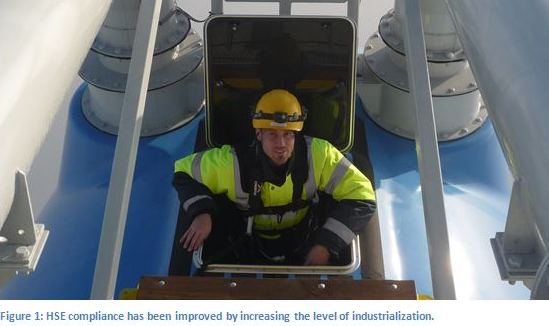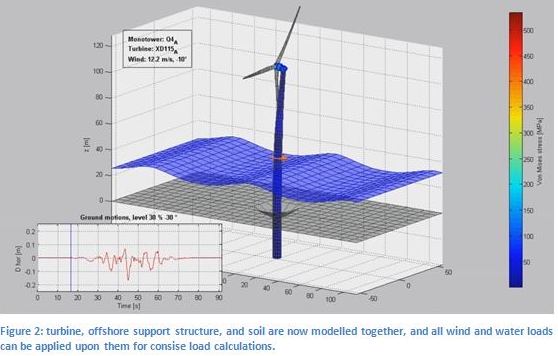
◀ Back to projects overview P201305-007-XD
Extension Optimized 5 MW XD-WTG: Improved design and O&M
Public summary
This project was an extension of FLOW-project P201204-002_XD (XEMC Darwind) “Optimizing the cost of energy of the XD offshore wind turbine”. The main focus of that project was on better performance of the previously developed XD115 wind turbine by increasing its rotor diameter. The present Extension Project (P201305_007_XD) aimed to achieve improvements of our wind turbines on aspects of industrialization, robustness, maintainability, and HSE (health, safety, and environment). This project has been executed mainly in parallel with the already executed FLOW-project mentioned above.
Objectives
The overall strategic objective of this project was to bring the level of industrialization for XD’s wind turbine product platforms closer to the level of other successful industries, such as aviation, automotive and oil & gas. In this project, we aimed for adopting relevant methodologies, experience, technologies, and standards used in these industries to improve the design processes of our wind turbines.
Results
This project achieved a reduction of cost of energy of approximately 4%. Highlights of how this cost reduction has been achieved are presented below.
A set of rules has been created to define a functional breakdown of the turbine. All functions were assessed on failure risk and failure criticality. In this model, 63% of maintenance cost could be attributed to ten failures. The top failures, including failing pitch batteries, converter software errors, and blade quality issues, have been addressed, leading to much lower maintenance requirements and thereby saving significant operational costs.
Also, a new maintenance strategy was developed, including the robust design and quick fix-methodologies. These methodologies ensure that the wind resource is used optimally. Critical systems have been designed with increased robustness, which makes sure they can still perform important functions in case of problems. In this way, these problems can be overcome during low wind periods, increasing annual energy yield.
A working order/permit system has been implemented within the company. This is another example of a next step of industrialization borrowed from industries with a longer history. Knowing and specifying beforehand who is doing what, when, under whose supervision, and with which tools decreases health, safety, and environmental (HSE) risks significantly.
This more time- and cost-efficient maintenance is very relevant for far offshore wind farms, where access is always restricted to specific weather windows.
XD has also improved its offshore loads calculations capabilities in this project. For three offshore projects, an integrated model was created of wind turbine, support structure, and soil. Time-based simulations took into account both wind and sea loads. Creation of reduced seabed models made it possible to calculate load sets more efficiently. XD worked together closely with foundation designers, taking into account their input. Optimizing wind turbine and foundation by modelling loads more precisely saves material costs, since more lean designs can be created.
Finally, we worked out condition monitoring systems for several parts and implemented them successfully on the XD115 prototype. Examples of these parts include the main bearing, converter, dehumidifier, and battery back-up system. The condition monitoring systems proved useful for performing condition-based maintenance. Also, first steps have been made to develop a more generic data acquisition system based on turbine computer data for top-level data analysis.
Conclusion
Concluding, the level of industrialization for our wind turbine platforms has successfully been aligned with other industries, such as aviation, automotive and oil & gas. This saves an estimated 4% in cost of energy and also decreases risk, increases investor confidence, and increases ease of large scale offshore implementation significantly.
Contact details
Mr. Marco Plantema



 Share this page
Share this page
